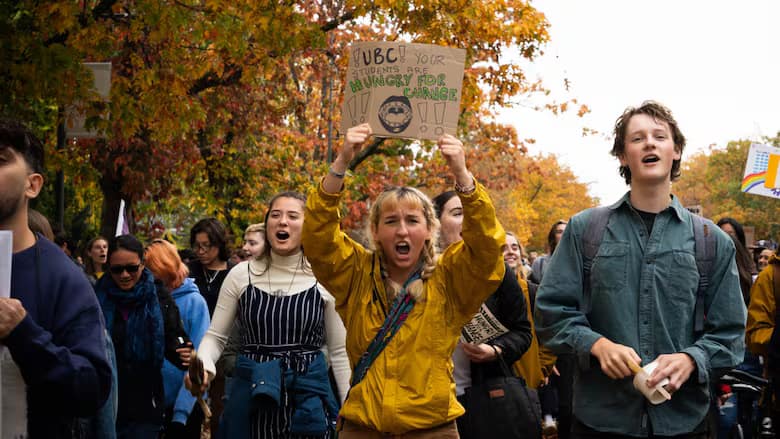By Juhi Sarvaiya
From protests in medieval Europe to modern-day campus movements, students have always been at the forefront of challenging injustice, advocating for change, and reshaping higher education.
Historically, activism at universities began as early as the 13th century and over time, student movements evolved into powerful forces for civil rights, democracy, and social justice.
But while large-scale movements often make the headlines, one of the most powerful forms of student activism exists right on campus: the student union.
Student unions, like Students’ Union Okanagan (SUO), are direct descendants of past student movements. They exist because of generations of student activism and continue to fight for students today.
Student unions evolved from initially being social organizations to becoming powerful student advocacy groups, with the National Union of Students (NUS) in Canada forming in 1972 as a response to student activism and the need for a collective voice.
Today, students are more active than ever, pushing back against tuition hikes, advocating for safer campuses, and demanding equitable policies. But what lessons does history hold for the future?
A timeline of student activism:

13th Century (Paris & Bologna):
Early student activism emerged as students demanded better treatment, academic freedom, and general town-and-gown issues.
17th Century (USA) :
Harvard’s era of dissent began with the “Great Butter Rebellion” of 1766. It was the first known student protest on an American campus and for a time led to half the student body being suspended.


1960s (USA):
Students played a key role in marches and protests for racial justice and opposition to the Vietnam War.
1989 (China) :
Tiananmen Square Massacre (aka the June Fourth incident)
Students led a pro-democracy movement that became one of the most well-known protests in history against the Chinese govt. They fought for the rollback of the removal of “iron rice bowl” jobs, greater accountability, democracy, freedom of the press, and freedom of speech.


2012 (Quebec):
Known as ‘Quebec’s Maple Spring’, students at the Université du Québec à Montréal and Université Laval voted to strike in protest of a planned tuition hike, the first of many strikes that would see almost 200,000 students boycotting classes at its peak.
2019:
Global climate strikes took place across the world, where students led by figures like Greta Thunberg, organized mass climate protests.


This is just a glimpse into the history of student movements. Student activism isn’t just about isolated moments in history- it’s an ongoing movement that evolves with time.
Many don’t realize that student unions themselves are a product of past activism. Student-led organizations exist to protect and advocate for student rights, and SUO is no exception.
Some of the biggest issues that SUO at UBC Okanagan tries to tackle include student tuition hikes, open educational resources, mental health advocacy, gender equality, LGBTQ+ rights, political concerns, and so much more.
How You Can Get Involved (Even If You’re Not an ‘Activist’)
Not everyone has to lead a protest to make a difference. Activism comes in many forms. Here’s how you can support change on campus:
Join a Club or Student Association – Whether it’s a cultural group, course union, or advocacy club, getting involved helps amplify student voices.
Vote in Student Elections – The people representing you in student governance make real decisions that affect your university experience.
Sign Petitions & Support Student-Led Campaigns – Many issues, like tuition hikes, are fought through collective action.
Show Up for Events & Protests – Whether it’s a mental health awareness rally or a sexual health awareness campaign, participation matters.
Use Your Skills for Change – Writers, artists, filmmakers, and designers can contribute to movements in unique and creative ways!
Student activism has shaped history, influenced policies, and continues to change the world today. Whether through large-scale protests or everyday actions, students have the power to challenge injustice and demand better futures.
Research:
https://www.wearebcstudents.ca/our_history
https://www.autostraddle.com/a-history-of-student-protests-1924-to-2024
https://www.bestcolleges.com/blog/history-student-activism-in-college/





